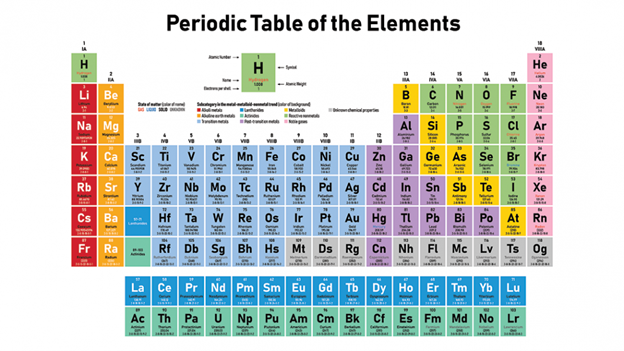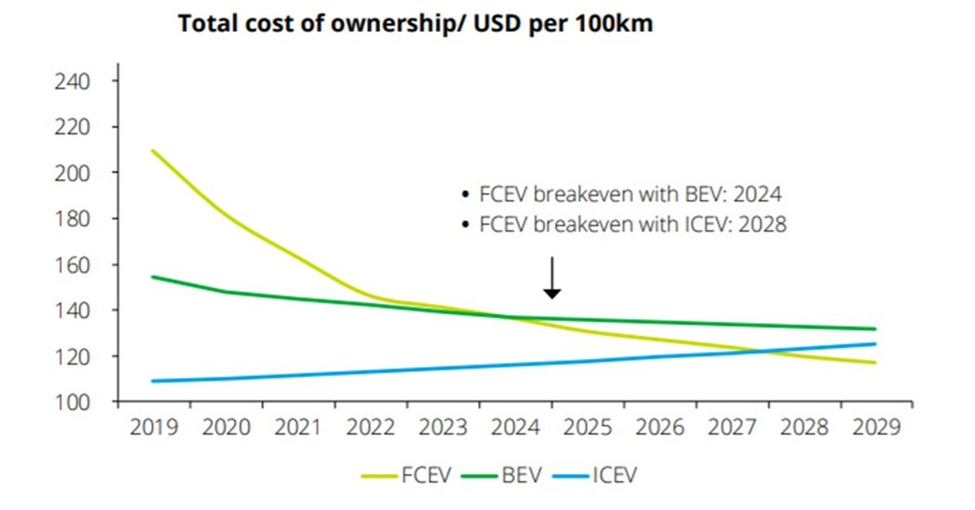Editor’s note: “Breakthrough Tech’s Kickstarting the $11 Trillion Hydrogen Revolution” was previously published in March 2023. It has since been updated to include the most relevant information available.
The world’s energy industry needs to change. And frankly, whatever firm figures out how to best execute this change will become the world’s most valuable company.
I firmly believe that.
We don’t all need social media accounts. We don’t all need to shop online.
But we all do need energy.
Trillion-dollar empires have been built on the back of providing solutions for things we don’t necessarily need. Therefore, it seems only logical that a $10 trillion empire will be built on the back of providing a solution for something that we all do need: energy.
So, let me offer a simple investment strategy. Find the company that is going to fix today’s energy crisis, buy the stock, and hold it for five years.
I suspect doing just that one thing could end up being the most profitable thing you ever do.
Alas, though, here’s the million-dollar question: What is that company?
An oil titan? A solar powerhouse? An energy storage firm? A wind turbine maker? A natural gas refiner?
How about none of those?
In this situation, we think it’s best to follow Thomas Jefferson’s advice: “If you want something you’ve never had, you must be willing to do something you’ve never done.”
We want to create global energy independence and surplus. We want to have more energy than we know what to do with – and that’s something we’ve never had.
To achieve that, we have to do something we’ve never done before.
We have to embrace hydrogen as our energy panacea.
Hydrogen: Scientific Superiority
Before we go any further, let me first state that, yes, I’m well aware of the back story on hydrogen.
It’s been touted as a viable clean energy source since the 1970s. Yet, since then, it hasn’t been used to do much of anything as far as powering our world goes. The past 50 years in the Hydrogen Economy has been characterized by little more than a series of false starts.
But there comes a time when each new technology has its “moment” – a time when that previously unproven tech proves itself and goes on to change the world.
And now it seems hydrogen is having its “moment.”
Currently, we’re amid a global energy crisis. And it can’t be fixed by fossil fuels, nor solar or wind power.
So, what will fix the crisis?
Hydrogen – and to understand why, we need to rewind to our college Chemistry 101 classes.
For a moment, recall the periodic table.
Recall the periodic table. Hydrogen is the lightest element in the universe. You can fit a lot more of its atoms into a finite space. As a result, a hydrogen power source will be infinitely more energy-dense than a power source made with anything else.
That has astounding implications. Energy density is basically the holy grail of energy sources.
Hydrogen Has Major Value Propositions
Indeed, you could say energy density determines everything!
In transportation markets, more energy density means hydrogen fuel cells have longer driving ranges and faster refuel times than batteries. Therefore, hydrogen-powered vehicles can drive farther and refuel much faster than electric vehicles and even gas-powered cars.
In stationary markets, it means they have more consistent and robust power output. An energy storage system with more energy density will last longer and provide more reliable power. Therefore, hydrogen storage solutions can provide more consistent power than battery energy storage systems.
But energy density is only one of hydrogen’s major value propositions.
Another major value prop is that hydrogen essentially has infinite abundance. So long as we have water – consisting of two hydrogen atoms and one oxygen atom – we will have hydrogen power. Over 70% of the Earth is covered in water. There will never be a shortage of potential hydrogen energy.
Plus, hydrogen – unlike other alternative energy sources such as solar and wind – is storable, packageable, and transportable.
Hydrogen can be produced via electrolysis at giant factories to either:
- Be stored in a container and sent across oceans on giant ships (like oil)
- Be pumped into existing natural gas pipelines to homes and businesses already connected to the existing grid (like natural gas)
- Be pumped into existing pipelines to arrive at fuel pumps across the globe (like gas)
Hydrogen truly is a “super” energy source with nearly limitless potential. And it’s finally ready to change the world.
The Hydrogen Economy Is at a “Tipping Point”
We believe that for the first time ever, all the stars have aligned for the Hydrogen Economy to “tip” into hypergrowth mode in 2023.
The elephant in the room, of course, is the Russia-Ukraine war. That sent oil and natural gas prices to nearly unaffordable levels. Yet, solar and wind aren’t quite there in terms of capacity and efficiency to allow the world to fully break away from fossil fuel dependence.
So, in steps hydrogen – an energy source that is simultaneously clean and cheap, yet also powerful and plentiful enough to fulfill the world’s energy demand.
It’s a dream solution – and it’s getting robust support. A few months ago, the U.S. government passed the largest-ever climate bill promoting the adoption of alternative energy sources. And in it, there is America’s first-ever production tax credit for hydrogen!
At the same time, the costs of hydrogen have plummeted, too. With advanced tech and economies of scale, hydrogen fuel cells costs have dropped 60% over the past 10 years. Deloitte expects these costs to drop below electric battery and combustion engine costs within a few years.
And the actual underlying tech has dramatically improved, too.
Take, for example, a new research paper published by researchers at the University of Melbourne just months ago. It reveals the details of a tiny hydrogen “sponge” that absorbs moisture from the air, then turns that moisture into hydrogen energy.
The tech literally makes hydrogen energy appear out of thin air. What other energy source can do that?
Putting it all together, all the growth drivers for hydrogen have shown up at the same time.
In the words of Matthew Blieske, Shell’s (SHEL) global hydrogen product manager:
“[In the past] there was a policy missing, or the technology wasn’t quite ready, or people were not so serious about decarbonization. We don’t see those barriers anymore.”
With those barriers removed, the Hydrogen Economy will tip into its long overdue renaissance in the 2020s. And this will create what Morgan Stanley (MS) sees as an $11 trillion market in the coming decades.
The Final Word on Hydrogen Stocks
The history of hydrogen as a viable clean energy source is riddled with empty promises and broken dreams.
But this time is different. Now hydrogen is finally ready to reshape the world’s energy landscape with ultra-affordable, ultra-dense, ultra-reliable, and ultra-transportable clean energy – at a time when it is the only energy source capable of cost-effectively allowing every country in the world to achieve energy independence.
Investors who bet early on this revolution will win big.
Indeed, investors who bet early on the broader energy transition will win big, too. This isn’t just about hydrogen. The world needs more energy. That means more oil, more solar, more wind – more everything.
The novel technologies that emerge to solve the world’s energy crisis will be the most compelling investment megatrend not just for 2023 – but for the entire 2020s.
And there is one in particular that will power all of these breakthroughs.
Find out more about that top-secret tech and its explosive profit potential.
On the date of publication, Luke Lango did not have (either directly or indirectly) any positions in the securities mentioned in this article.



